Weather Arbitrage, Snowbirding in Costa Rica
When winter comes, it’s great having a break from mowing the lawn and tending the garden. I’m even learning to enjoy the cold – surfing the Northeast into October and cold-conditioning with dips in our pool until I can’t get through the ice. While all the cold training makes me feel tough as a polar bear, the short cloudy days can leave me a sad bear. One of the things that excited me most about early retirement was the prospect of escaping these down days to chase an endless summer.
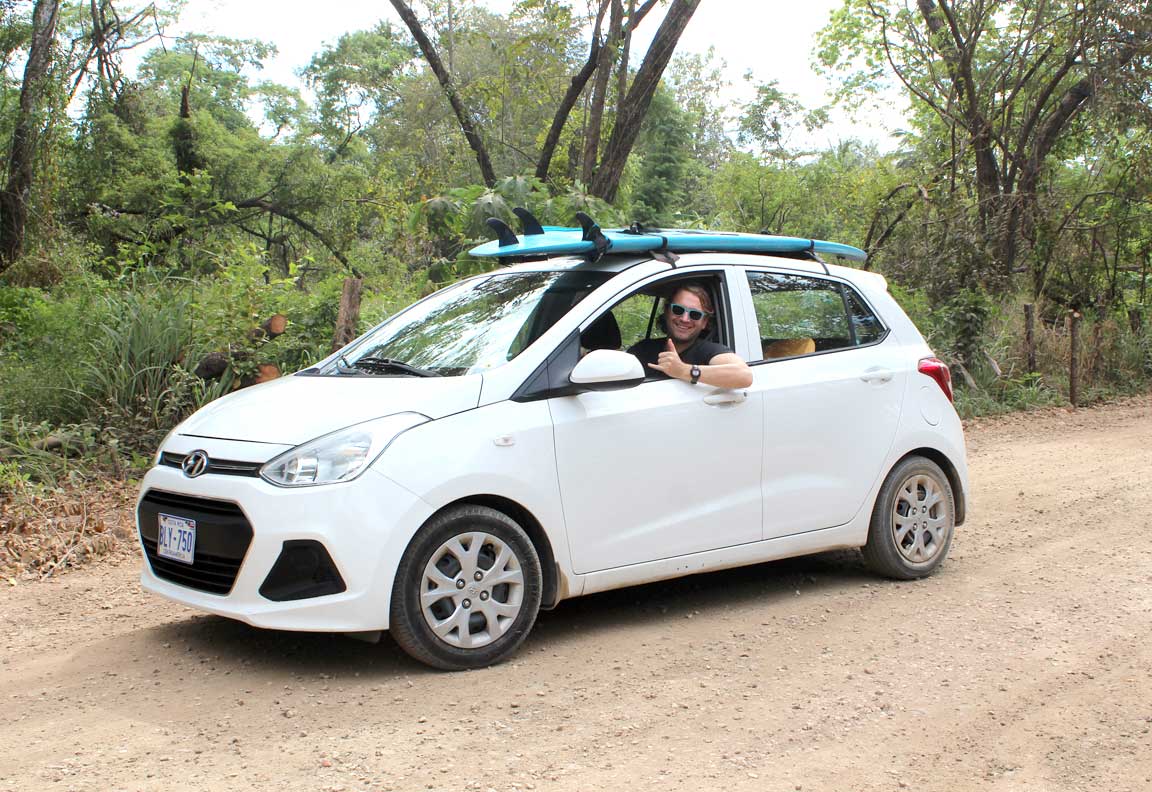 Trading -10F for 90F
Trading -10F for 90F
Swapping winter for a Costa Rican summer
I’ve always been nervous about leaving the house during winter months – what if the house lost heat and pipes froze, or what if our flights got snowed out? This year, instead of worrying abut it, I hired a neighbor we’re close with to keep and eye out and clear any snow. We bought tickets, turned the thermostats down, and left our home in hibernation while we flew south.
On many of our trips, we’re road tripping, trying to see as much as possible. This was the first time we slow traveled for a longer period of time (I ended up in Costa Rica for over a month) just living like a local, or at least like a jobless beach bum.
Slow travel was a whole new experience, and it hit me the first day while strolling down to the beach. The sun was high in the sky warming my back. In no particular rush, I took time to scan for monkeys in the canopy, and listened intently to the whirring chirps of tropical birds in the banyan trees. My mind wasn’t preoccupied with planning our next drive or night’s stay, there wasn’t anything to do but take it all in. I’d be walking this same path to the beach every day.
This was the kind of life I’d spent years in a cubicle dreaming about.
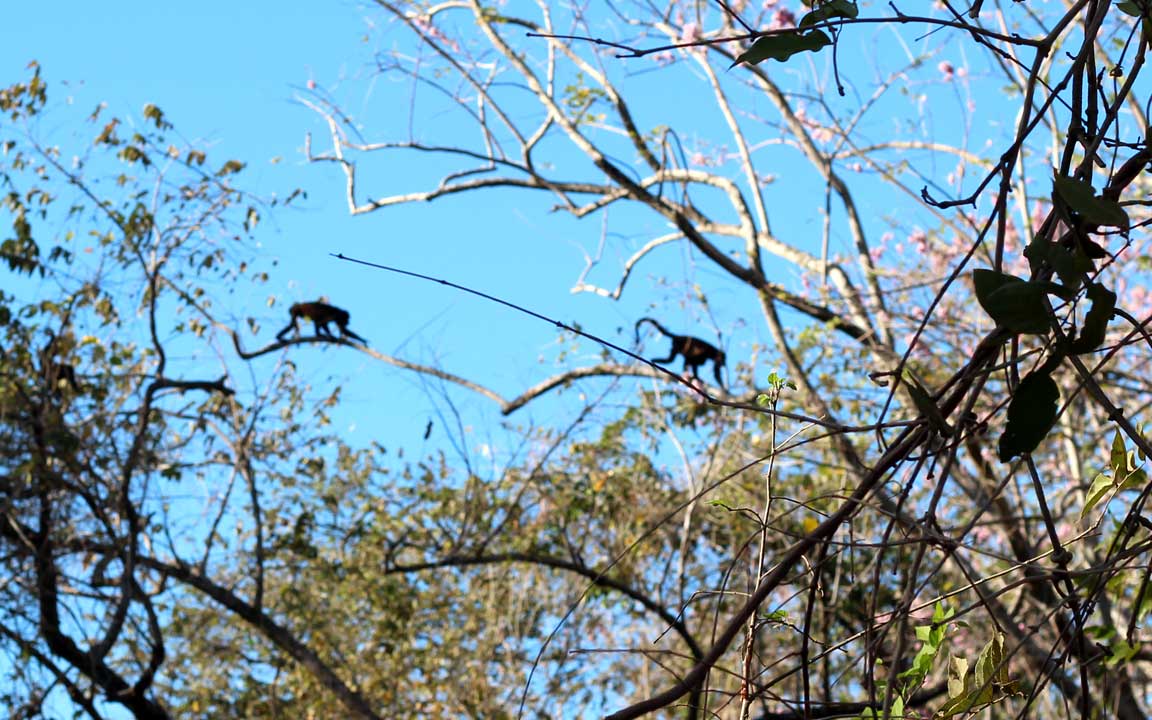
Guanacaste in the winter months
In Guanacaste, the rainy season ends in November. The weather then gets hotter and dryer until the first rains come in late May. The best “summer” months come shortly after the rainy season when it’s still cooler and green – December through February.
We’ve been in Costa Rica in March, and also in November. This was the first time we’ve been there during peak season. The dirt roads are dry and freshly graded. The landscape is lush and green, but it never rains. Most importantly, the surf is at its best this time of the year.
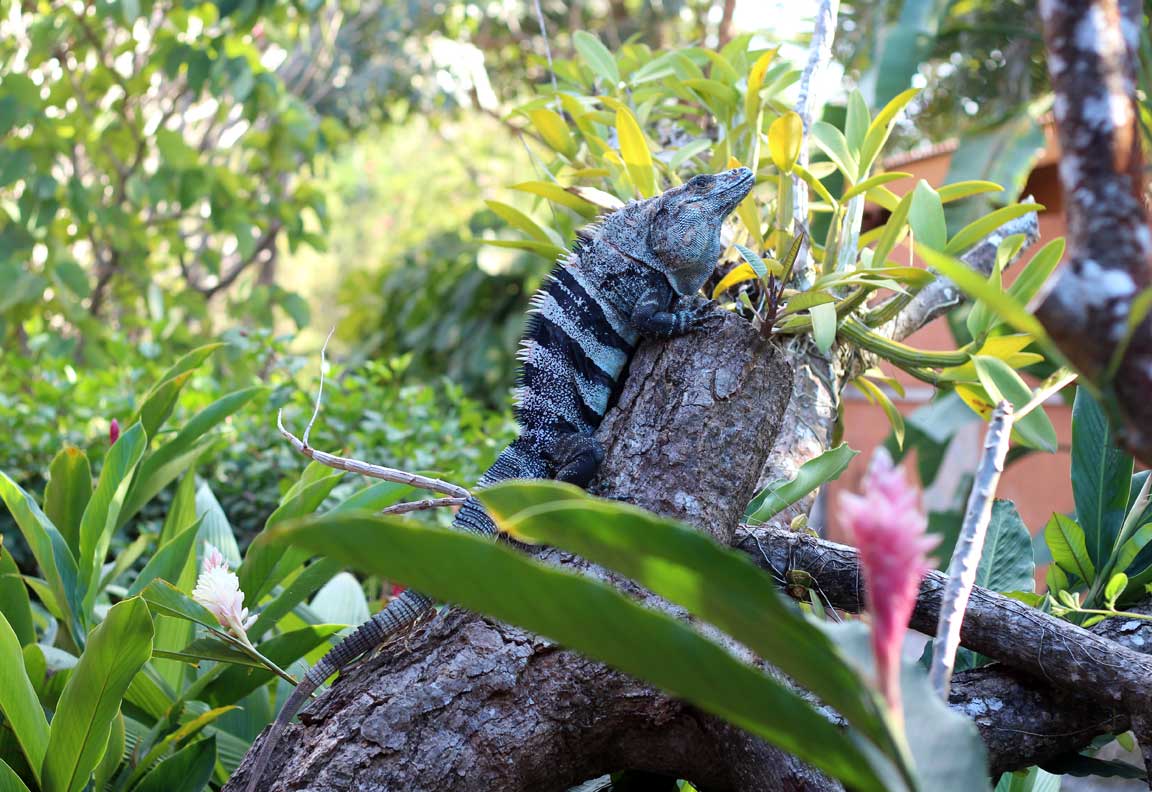
What our life looks like in Costa Rica
Our daily activities revolved around walking the beach, surfing, reading by the pool, and cooking meals. For weeks, we followed a well worn groove that started from day one. A basic day looks like this:
Wake up at 6am with the first light for the beach
I like to sleep in, but the sun near the equator rises high in the sky. There isn’t much shade, and this is the best time to take a walk. On the beach, I study the waves for signs of good swell, and scan for turtle tracks.
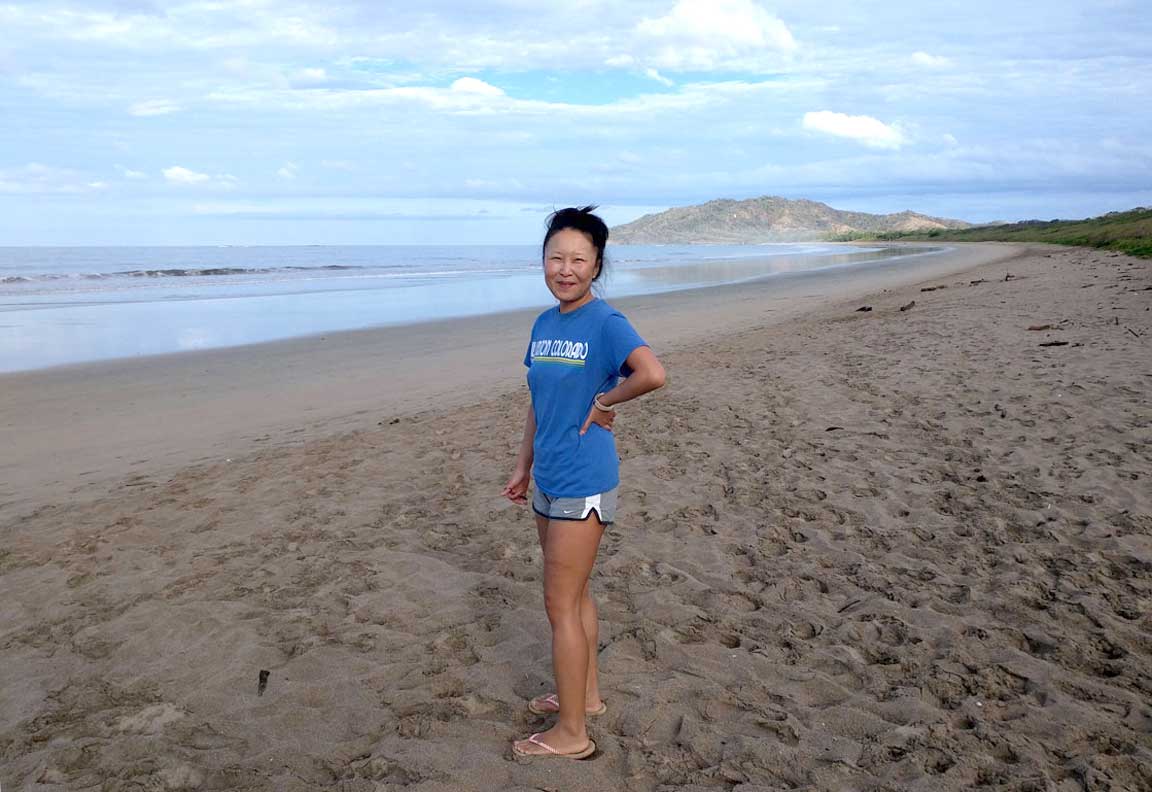 The beach is cool and calm in the morning
The beach is cool and calm in the morning
This is the time of year that a variety of sea turtles come up on the sand to nest and lay their eggs. The most elusive, and endangered, is the leatherback turtle. This is the biggest living turtle – the size of a small car. Their flippers leave tracks that look like a small tank just went through. Last year only 12 nested at our beach. I was happy to see fresh tracks from a couple of new nests during our stay.
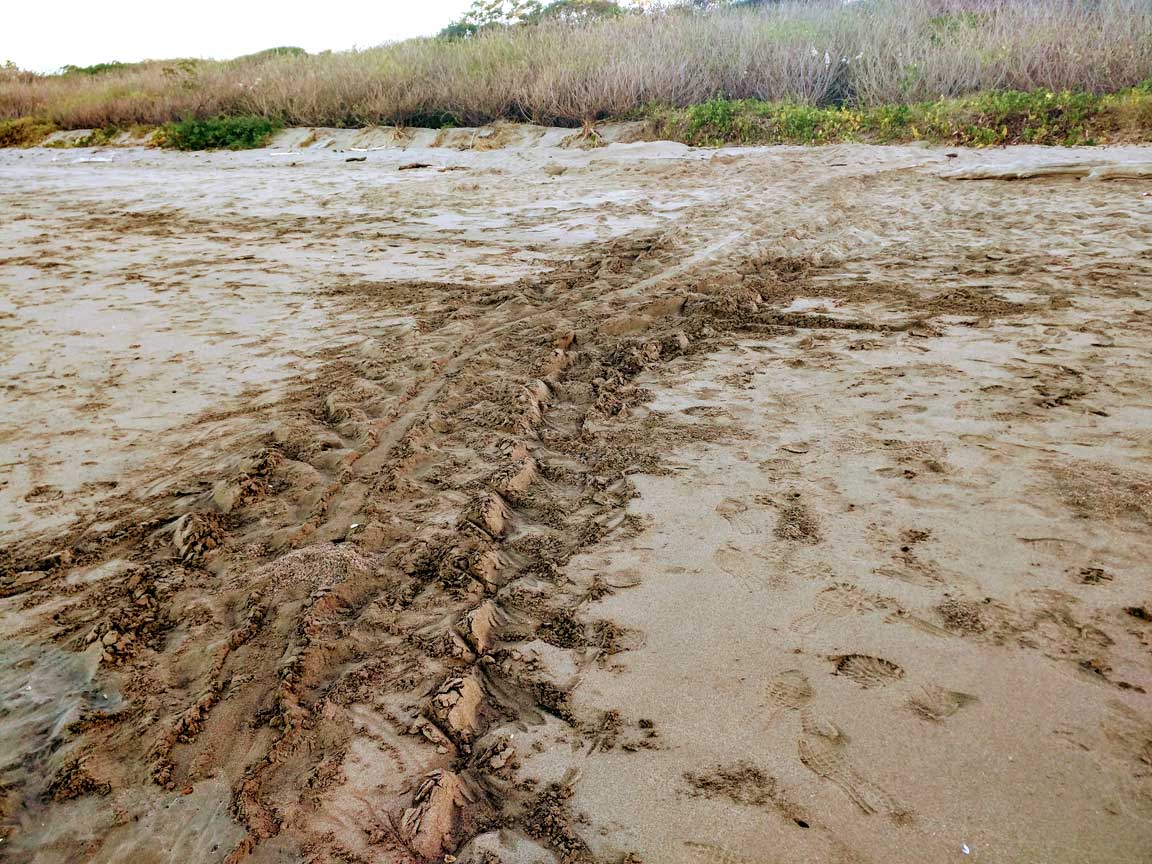 Tracks from a leatherback turtle
Tracks from a leatherback turtle
Cooking meals
Being in Costa Rica for over a month means we do a lot more cooking. While there are some grocery stores that look like the ones we have in the States, the more conveniently located ones are quite different.
 Just living
Just living
These open air markets don’t necessarily carry the same ingredients we’re used to. This makes things more exciting because we can broaden our palette and cooking repertoire. Ingredients we shied away from at home, like yucca, are cheap and quickly became a daily staple.
The aroma coming from the meat department in our grocery is reminiscent of the Long Island Sound at low tide, but upon closer inspection, I found the selections to be quite fresh. Since we only had a small cooktop, everything had to be pan fried. Most cuts are prepared for this – thin sliced pork chops, ground beef, and de-boned chicken thighs.
Ordering from the butcher also helped me improve my Spanish. You tend to pick up on the intricacies of a language faster when you’re handed something completely different from what you thought you ordered.
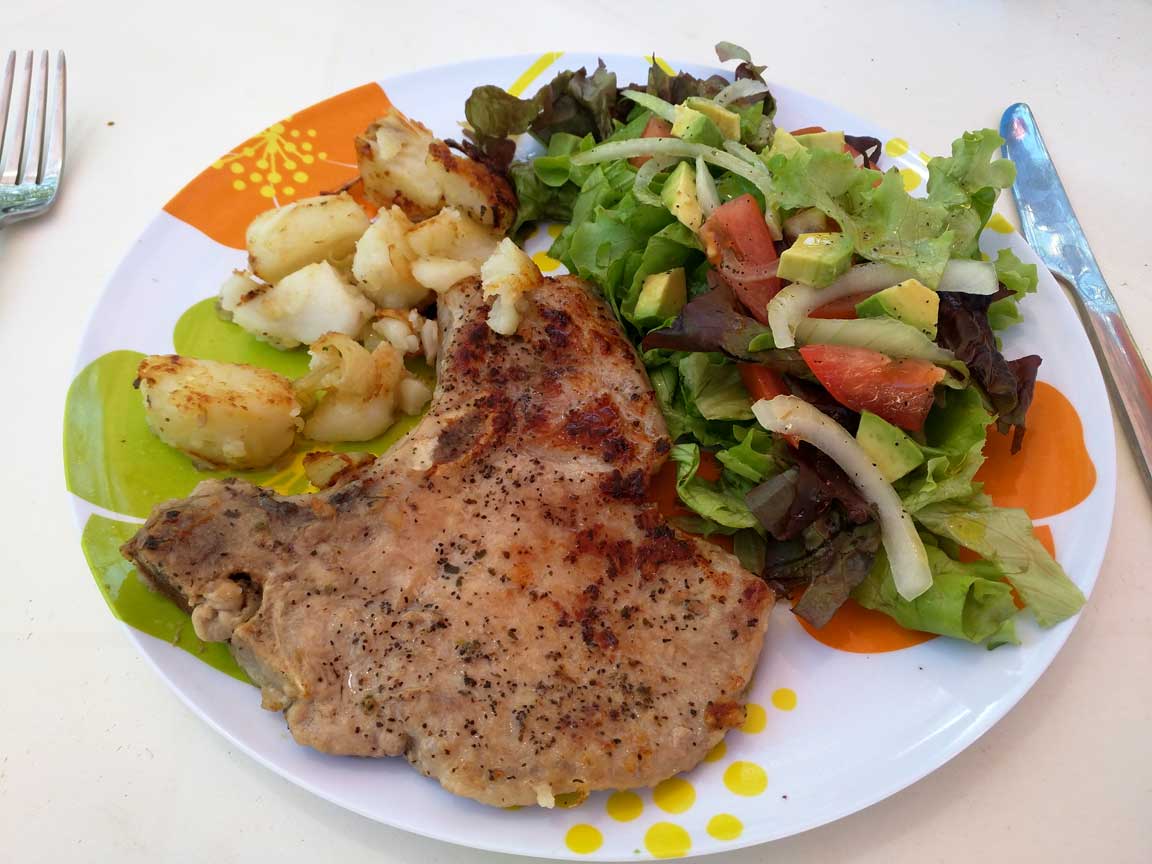 A typical pan fried lunch
A typical pan fried lunch
While it took some getting used to, before long, we were back into a familiar routine cooking tasty meals in our little kitchen.
Surfing
The best surf here is in the few hours surrounding high tide. Each day the tide marches forward another hour with the changing moon, meaning the surf schedule is always in flux.
While waiting for the surf, or after a session, we hang out by the pool reading and surfing the web. Even being lazy, we still got to enjoy the wildlife swinging by for drinks or baths in the pool.
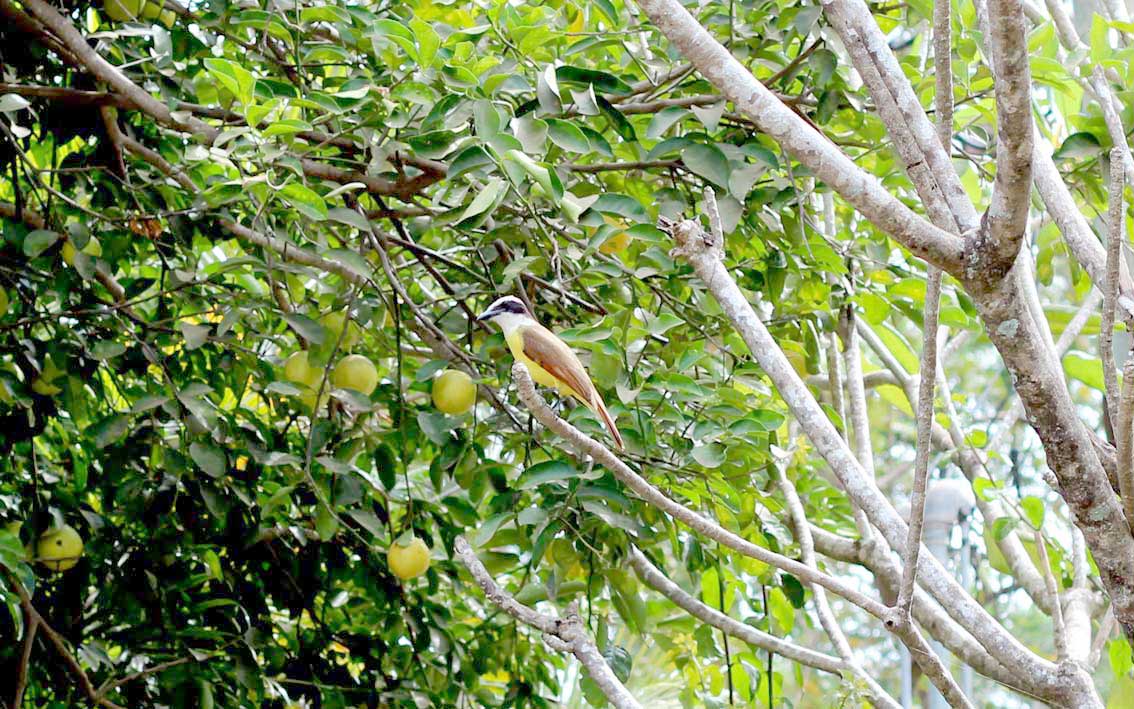 We shared this guy’s personal bath
We shared this guy’s personal bath
Even when the surf isn’t great, I can float out in the ocean for hours enjoying the views and sea life. Twice I saw Spotted Eagle Rays cruise right underneath me, and often bait fish would scurry around me while leaping from the water. I kept my digits in close while looking out for the predators chasing them. These were usually large Jacks, which I’d see chasing prey through opaque waves walled up before me as I paddled out.
There’s so much energy in the water down here.
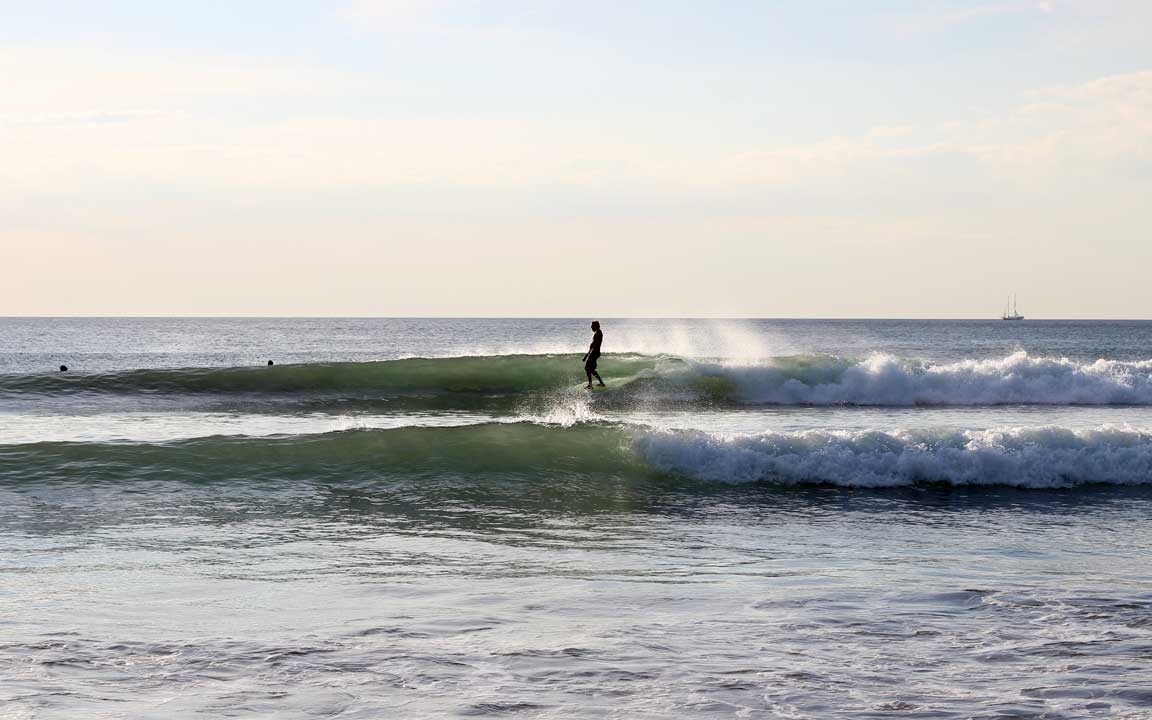 A local friend catching a ride
A local friend catching a ride
Surfing regularly, 2-3 hours a day, for over a month really helped me make some big strides. My timing got a lot better, and I can catch more waves while using much less energy. Catching more also means riding more. Being on the face of a wave weaving up and down to pickup speed is an incredible rush. I feel like a kid each time I go out because I’m always experiencing something new and exciting.
End the day the same way it started – on the beach
After a fulfilling day of surfing, cooking, eating, reading, and relaxing, the best way to wrap up is with a sunset happy hour. There is an unobstructed western view from our expansive beach, and the sunsets are amazing. I even saw a green flash for the first time in my life.
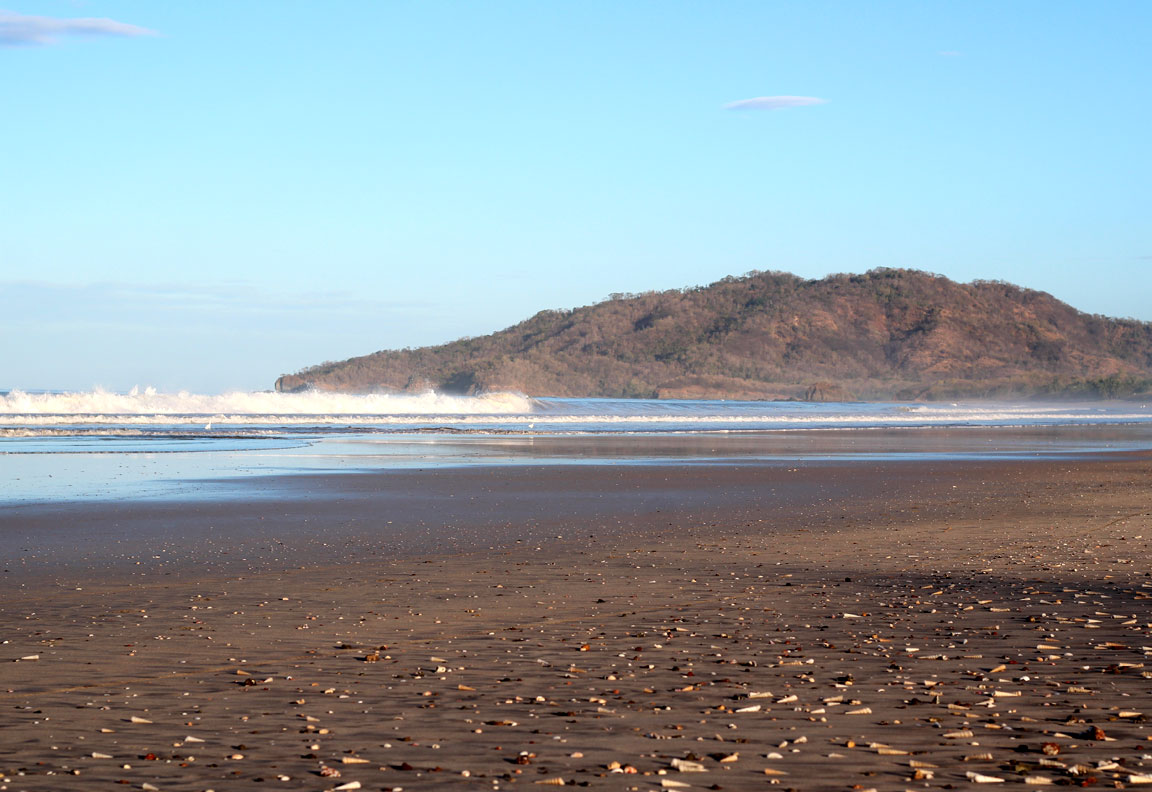 Life revolves around the beach
Life revolves around the beach
After staying in the same spot a number of times, we made some really good friends. They make slow travel in Costa Rica infinitely more enjoyable. We all bring coolers of beer down to the beach, and enjoy good company and conversation while the sun sets.
I could start and end every day of my life this way.
How much did our trip to Costa Rica cost?
The weather and conditions during this time of year were the best we’ve seen. The fact that this coincides with the coldest winter months up north is also why it’s high season for tourists. This translates to higher rates, especially for accommodations and cars.
We’ve kept in contact with previous hosts and were able to work out a deal paying $70/night for our small studio apartment. These aren’t the cheapest prices for a longer term stay in Costa Rica, but we were staying in a gated community, steps from the beach, with a pool. It’s a vacation spot.
I ended up going on 2 separate trips, the first one was in the beginning of January. Our tickets cost about $900, and we were able to cover $500 of it with the last of our free Delta vouchers that we hacked during our Colorado trip.
When we got back from our first 3 week trip, I noticed some good flights a few weeks later for 60,000 American Airlines points. We had just picked up 60,000 points by signing up for an AA Aviator card. My mom always wanted to go to Costa Rica, so I made plans to take her for a two week trip. We paid about $160 in fees.
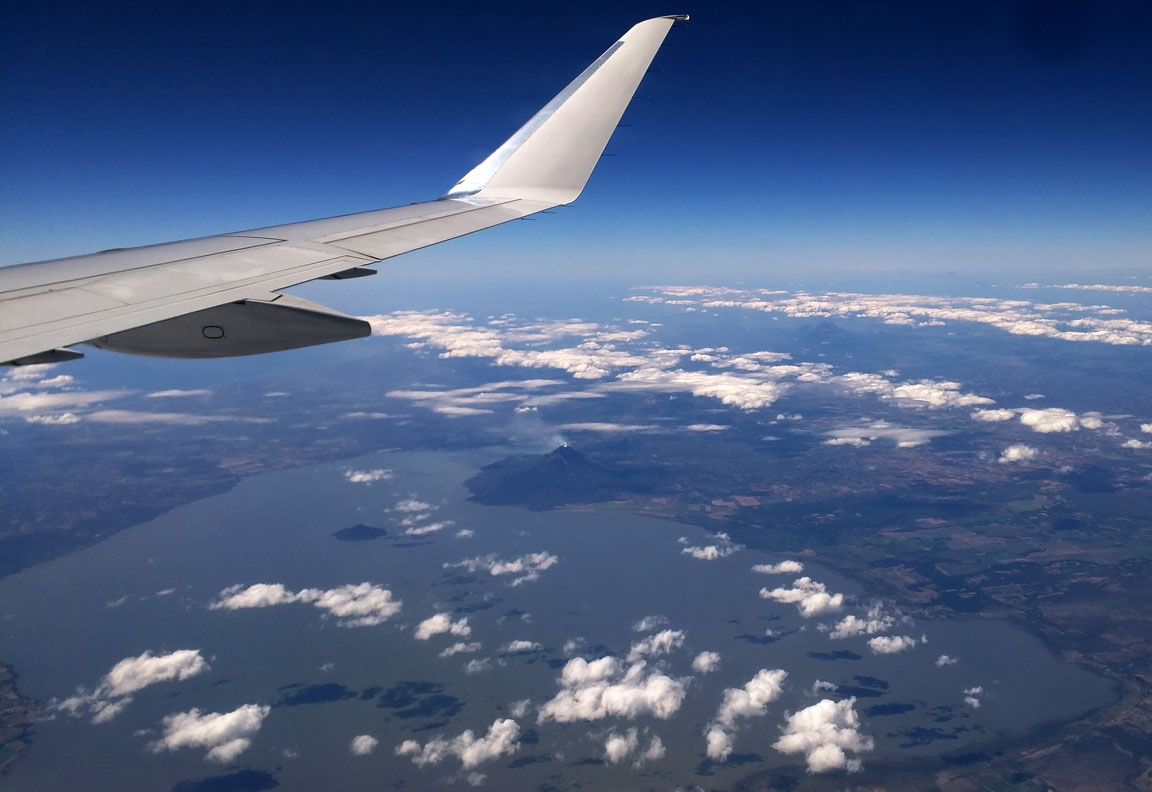 Free flights with a volcano view
Free flights with a volcano view
The rental car was most expensive in January at $37/day, but when I went back in February I got a much better last minute deal for only $20/day.
I want to snowbird every year
These trips were awesome, and I definitely want to travel again somewhere hot to surf next winter. While we can get free flights, we still paid a bit over $3k for car and lodgings. This eats up a lot of our travel budget, and I’m trying to find ways to go for longer while spending less… Anyone with an empty surf shack?
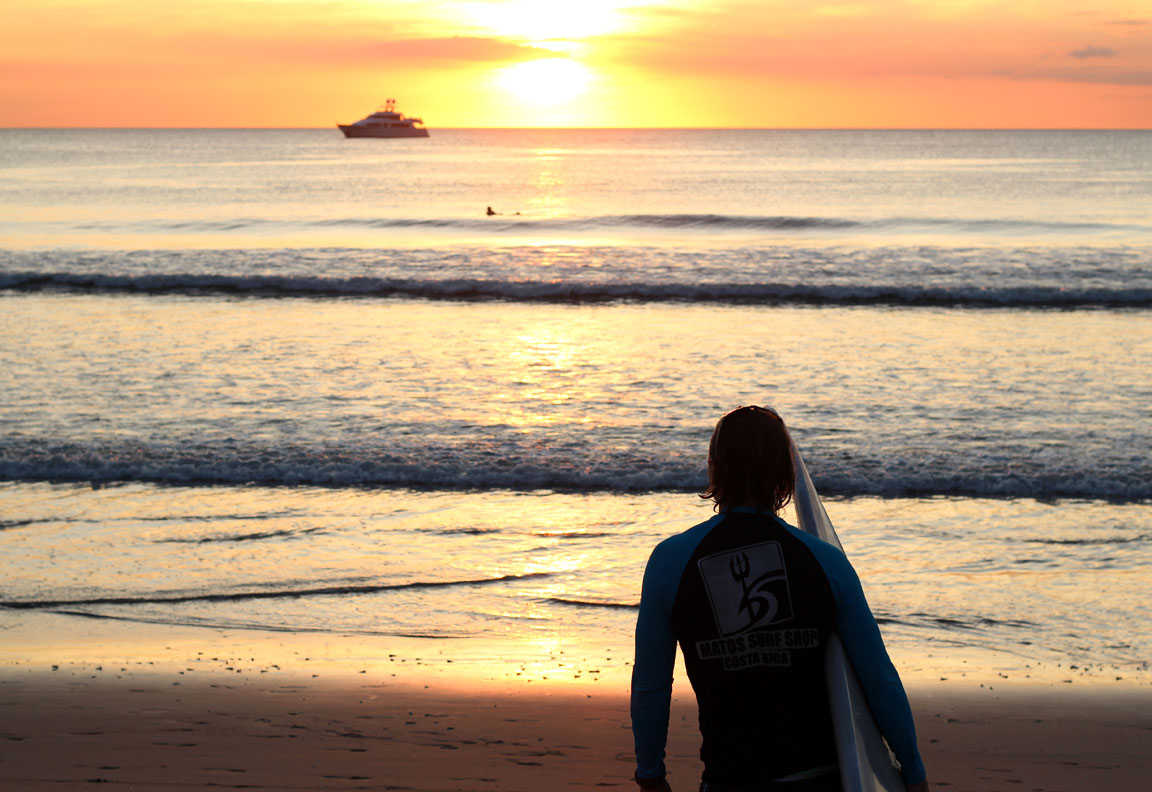
This also has us thinking about how the next stage of FI might look for us. Mrs. CK is still enjoying her teaching gig, and the benefits are awesome. As long as she enjoys doing it, we’re happy to stay in Connecticut. If we do end up moving on, we might consider a hybrid approach for our next living situation. That might look something like summers in Vermont during its slow season, then going somewhere hot with surf during ski season…
For now, I’m very happy with our situation, and still amazed that our plan for financial independence is working out. The dream is real, and every day I’m grateful to have opportunities like this.